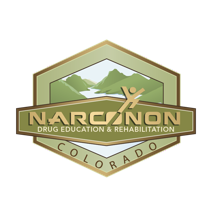How the Prison System Is Failing those Who Are Struggling With Addiction

It is a well-known and unfortunate fact that the United States has the highest prison population in the world. According to the Prison Policy Initiative (a non-profit and non-partisan organization), the United States Criminal Justice System holds more than 2.3 million people, and this is not including those people who are currently on parole or probation. One of the largest contributing factors to our overcrowded and overpopulated prisons is the United States ineffective means of dealing with drug offenders. According to the Center on Addiction and Substance Abuse (CASA), the United States has 5% of the world’s population yet consumes two-thirds of the world’s illicit drugs. On top of this, the United States incarcerates nearly one-quarter of the world’s prisoners of which 60% test positive for illicit drugs upon their arrest. It has been estimated that 8 out of 10 prisoners have some form of substance abuse involvement or history.

Since the beginning of the War on Drugs, the United States has seen a substantial increase in the rates of incarceration for drug-related offenses. The Center for Prisoner Health and Human Rights states that in 1980 there were approximately 40,900 people incarcerated for drug related offenses, in 2013 that number jumped up to 489,000. One in five people incarcerated is locked up for a drug-related offense. Studies conducted by The Prison Policy Initiative have found that there are over one million arrests for drug possession each year and there are more than four times as many arrests for drug possession than for drug sales. This alone shows that there is a desperate need for quality addiction rehabilitation in our country. History has shown us that the solution to the United States drug problem cannot solely focus on battling suppliers when one drug cartel is taken out another quickly takes its place. The more sustainable solution would be to work on cutting down the high demand for illicit drugs, and this can only be done with effective treatment and prevention programs.
According to CASA and The National Association of Drug Court Professionals (NADCP) out of all of the men and women incarcerated in the United States it is estimated that 50-65% meet the Diagnostic Statistical Manual’s (DSM) criteria for substance abuse or dependence and even more inmates have a history of substance abuse and/or were under the influence of drugs or alcohol while committing the crime they were incarcerated for. CASA estimates that the combination of these groups totals to 85% of the United States prison population. Taking all of this into consideration it would seem logical to have inmates with substance abuse issues participate in substance abuse treatment while serving time, however, according to CASA, only about 11% of inmates with substance abuse issues receive any form of treatment while they are incarcerated. It is no wonder that so many men and women continually find themselves in and out the United States criminal justice program.
CASA and The Center for Prisoner Health and Human Rights have found that men and women incarcerated for and suffering from substance abuse issues have a high recidivism rate and without treatment are likely to relapse upon their release. It has also been found that non-treated substance abusers are more likely to return to prison than non-substance abusers. The NADCP has found that 60-80% of drug users released from prison will commit a new crime upon their release and in most of these cases, the crime will be drug related. Studies done by the NADCP have also shown that the majority of people (95%) who are incarcerated with substance abuse issues will return to abusing drugs upon their release.

Taking into consideration that there are almost half a million men and women locked up for a drug-related offense and that of those men and women the vast majority who do not receive treatment will return to abusing drugs upon their release; it would seem wise to look at a reforming the way we treat drug offenders and how money is spent on correctional facilities. History has proven that in the majority of cases the punishment of jail and prison time without access to adequate rehabilitation does not somehow magically cure addiction. A more effective means of drug-related crime reduction would be a stronger focus on addiction treatment, prevention and job training for those individuals who need it.
The NADCP has found that the combination of Drug Court and supervised treatment has been more effective in the treatment of non-violent drug offenders than jail time, probation or treatment alone. Their Studies have found that treatment of drug offenders is usually not very effective without some form of accountability because there has usually been a high dropout rate for drug offenders unless they are under a higher level of supervision. When done correctly the Drug Court method of handling drug offenders by means of treatment and accountability has been found to end up being cheaper than other justice strategies and on average provides a lower recidivism rate. The NADCP has calculated that Drug Court can save an average of $4,000-$12,000 per client due to lowered prison costs, reduced victimization and a lower amount of re-arrests.
According to the National Institute on Drug Abuse (NIDA) “every dollar invested in addiction treatment programs yields a return of between $4 and $7 in reduced drug-related crime, criminal justice costs, and theft. When savings related to health care are included, total savings can exceed costs by a ratio of 12 to 1.” The current system of punishment is clearly not an effective means of substance abuse treatment and the facts here back that up beyond a shadow of a doubt. Anyone who has dealt with addiction either on a personal or second-hand level can see that you cannot simply punish the addiction out of an individual. It is well past time to take a serious look at our criminal justice system and how it treats those dealing with addiction.
Summary
High incarceration rates show that prison time is not enough of a deterrent for someone to quit using drugs, especially once addicted. The best way to deal with this issue is to make long term, quality residential addiction treatment more available to not only convicted drug offenders but to the public as a whole. Without providing access to quality treatment and providing inmates and drug offenders the opportunity to learn new life skills the criminal justice system will continue to be, for the most part, a revolving door that is failing not only the addicts themselves but the community as a whole.
Reference Links:
- The Prison Policy Initiative
- National Association of Drug Court Professionals
- National Institute on Drug Abuse

